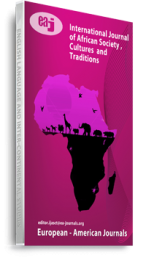Rosemary Ede’s debut play has, so far, not been subjected to intensive and extensive critical examination, particularly from a linguistic standpoint, to show how a new generation playwright has responded to and interpreted the onerous challenges of her postcolonial African society through the instrumentality or facility of language. with M.A.K. Halliday’s systemic functional grammar as the theoretical template, this study, therefore, investigates the lexico-semantic devices such as local signifiers (i.e. native proverbs and idioms, code-mixing and code-switching), figurations (i.e. simile, metaphor, alliteration), lexical repetition, and lexical relations (i.e. synonymy and antonymy), which have been deployed by the author to transmit or reinforce textual meaning and achieve aesthetic beauty. The study adumbrates the fact that the making of a literary text is a conscious artistic activity, since writers make deliberate linguistic choices from the vast range of options available to them to appropriately and effectively convey their visions and achieve requisite stylistic effects, in relation to social context or discourse situation.
Keywords: African Literary Discourse., Avarice at Dusk, Lexico-Semantic, Rosemary Ede, Systemic Functional Grammar

